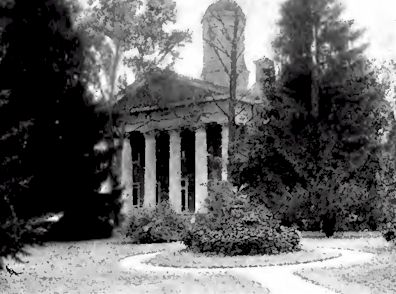|
Welcome
to Maryland American
History and Genealogy Project
we are in the process of
building new State and County pages for the states where
the coordinator has moved on to other projects.
Baltimore County is looking for a new Coordinator would you
be interested? If so please contact
Webmaster.
Many of the present coordinators are always willing to give help and
suggestions to newcomers, you can learn, I did and that was after 60!!
Read our
About Page and see what our requirements are,
pretty easy!


Court House at Towson
Baltimore
stands at the head of Maryland counties in population,
wealth and resources and its area of 622 square miles is
exceeded only by Garrett and Frederick. When the "Belt"
was annexed to Baltimore City in 1888 the county lost
considerable territory, 36,000 inhabitants and the towns
of Waverly, Oxford, Woodberry, Hampden and Calverton.
The eastern neighbor of Baltimore County is Hartford;
its western, Carroll and is bounded on the south by the
Bay, the city and the Patapsco River, separating it from
Anne Arundel and Howard. The Pennsylvania State line is
the northern boundary. The topography of the county is
diversified and attractive, elevated and rolling,
watered by the numerous picturesque streams and well
timbered. The soil is strong and fertile and a great
variety of crops are grown.
In mineral resources
Baltimore is particularly fortunate. From the early days
of the colony its iron ores attracted capital, and from
time to time numerous iron manufacturing establishments
have been in operation. Copper mines were formerly
worked in the county, and from this industry grew the
present large copper works at Canton, which now use
copper from Montana, the mining of the county deposits
being very expensive. The first discovery of chrome ore
in America was made a few miles north of Baltimore City,
and a flourishing industry in the manufacture of
products from this ore, of wide applicability in the
arts, was established. The building stones of the county
have given it high rank in the industrial world.
The famous Woodstock granite
is found in the southwestern corner, and has been
quarried since the thirties. It has been used in many of
the chief buildings in Baltimore City and in the
Congressional Library and Washington Post office. The
most valuable of Maryland's limestone deposits, it is
said, are the highly crystalline marbles of Baltimore
County. The Beaver Dam marbles have been used in the
construction of the Washington Monuments in Baltimore
and Washington, and Federal, State and municipal
buildings throughout the East. Gneiss and gabbro rocks
are also used in building.
The county is noted for its
mineral waters, Chattolanee, Roland, Strontia, Lystra,
etc. There are valuable deposits of serpentine and
porcelain clays. Along the Patapsco and the Bay are
numerous pleasure resorts and fishing and gunning
shores. The Baltimore and Ohio; Philadelphia, Wilmington
and Baltimore* and the Baltimore and Potomac run through
its southern portion; the Northern Central extends
northward through the county into Pennsylvania: the
Western Maryland runs northwesterly from Baltimore City,
and there are several short lines and electric roads.
The county seat is Towson,
named after General Nathan Towson, seven miles from
Baltimore, on the Maryland and Pennsylvania Railroad. It
is a terminus of a city electric car line, and is
situated in the midst of a superbly developed
agricultural country. It has a population of 2,500.
Canton and Highlandtown, small cities in themselves,
largely given over to manufacturing, adjoin the eastern
limits of Baltimore City. Cockeysville has a large stone
quarry; at Lutherville is a female seminary; Emory Grove
and Glyndon are noted camp grounds; Catonsville and
Mount Washington, with Roland Park and other towns, are
known for their fine residences and picturesque
locations. Hundreds of industrial establishments, large
and small, are located in the county, and Steelton
(Sparrow's Point) is the seat of the mammoth plant of
the Maryland Steel Company.
The county has many fine
estates and country seats, and from its formation, in
1659, has been the home of a great number of the
foremost men of colony and State. The battle of North
Point was fought on its soil. For years it had a
Congressman of its own. Baltimore was the name of the
Irish estates of the Calverts. The private and sectarian
educational institutions of the county are numerous, and
some of them of widespread fame.
* The name of this railroad
has been changed to Philadelphia, Baltimore and
Washington.
Online Here or Other Sites
Maryland
AHGP

Source: History of Maryland, by
L. Magruder Passano, Wm. J.C. Dulany Company, 1901.
|



